People at work / inside view
Jiro Dreams of Sushi

The Tokyo sushi chef Jiro has done the same thing at work every day for 60 years, no vacations, no holidays. He says he has loved every day of this repetition. The secret to his happiness is that everyday he tries to make his sushi even better than the day before. According to his customers he succeeds since his tiny 10-seat shop in a subway station is sold out a year in advance at $300 per meal. This documentary is an insightful and inspirational portrait of a craftsman seeking mastery, and the quest for perfection. Jiro’s life is now an inspiration for others following mastery as a way to find their passion. Oh, and the film is also a tremendously great view of the quality of work that world-class sushi really entails. You’ll look at sushi differently now. This is a deliciously perfect film about a perfect craftsman.
— KK

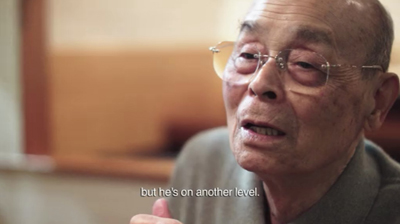
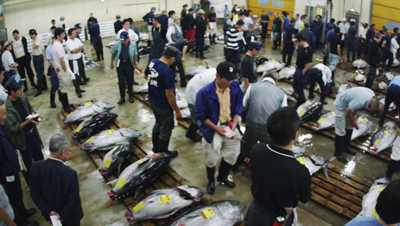
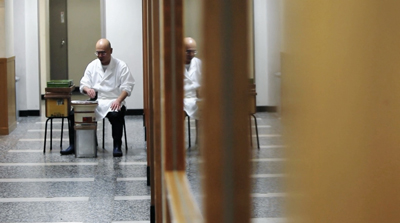
Jiro Dreams of Sushi
David Gelb
2011, 82 minutes
$1, Amazon Instant Video rental
Read more about the film at Wikipedia
Rent from Netflix
Available from Amazon
The Parking Lot Movie
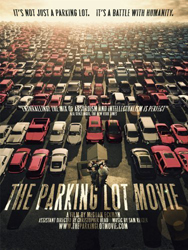
This small portrait of over-educated parking lot attendants in a college town is surprisingly entertaining. The guys profiled rank at the bottom of society’s status, but become the “Gods of the Corner Lot” and enter into a constant battle with the owners of expensive cars and SUVs. Their whole war with the “parkers” is all in their heads, and since they spend a lot of time sitting in their tiny shack doing nothing, they live in their heads. The great joy of this film is that it gets you into their big heads. Their tiny patch of sub-culture is charming and amusing.
— KK
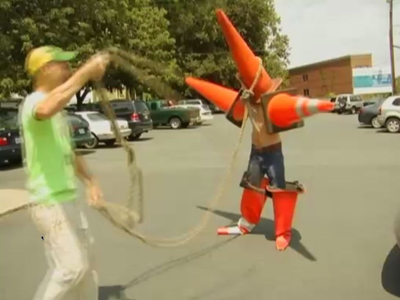
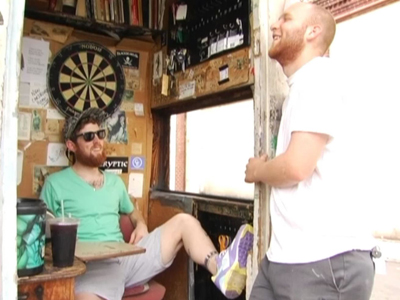
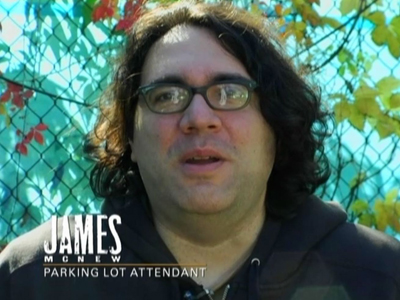
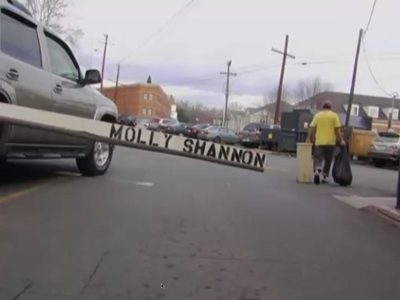
The Parking Lot Movie
Meghan Eckman
2010, 71 minutes
$3, Amazon Instant Video rental
Read more about the film at Wikipedia
Rent from Netflix
Available from Amazon
Last Train Home
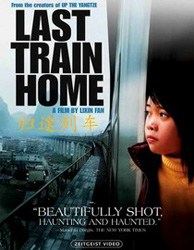
Here is a rare inside look at where your stuff comes from. The central event in China today is the mass migration of 100 million country folk to the cities to work in factories. This documentary follows one family out of those 100 million as it sacrifices everything to gain very little. Just getting the last train home at New Year’s is an ordeal worthy of arctic expedition. This raw and candid film is really a coming of age story about a typical teenage girl who can’t leave her boring farm quick enough, and the great pain her parents endure to help her succeed. But in the end it is a heartbreaking family drama — one played out millions and millions of times. With no preaching, you get to see the actual costs of the cheap jeans and electronics we purchase today. A big global picture is painted with this very intimate portrait of real life in the real China.
— KK
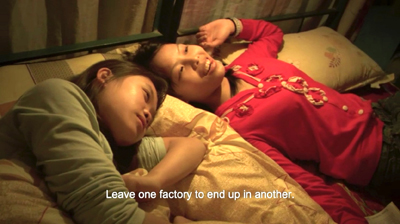


Last Train Home
Lixin Fan
2009, 90 minutes
$4, Amazon Instant Video rental
Read more about the film at Wikipedia
Rent from Netflix
Available from Amazon
The September Issue
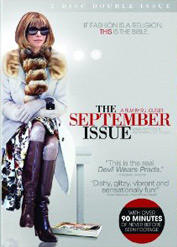
The Hollywood hit, The Devil Wears Prada, fictionalized the life of legendary fashion magazine editor Anna Wintour. As Editor-in-Chief of Vogue for several decades, Wintour has become the most powerful person in the global fashion industry, and she has long had a reputation for wielding her power coldly — thus the tyrant in the movie portrayed by Meryl Streep. However in The September Issue we get to see the actual Anna Winatour, and surprisingly I found her very likeable. She is filmed overseeing the fattest-ever issue of Vogue (September, 2007), a huge undertaking, while dealing with temperamental photographers, stylists, designers and advertisers. Although billed as a profile of Wintour, this film is really a profile of a magazine. The drama present in making the September issue only rehearses the drama present every month and in almost any large, national magazine. It reminded me of my own time spent at Wired (now owned by the same people who run Vogue). This documentary is about talented people trying to amaze and surprise, who keep seeking excellence, even at the cost of bruised egos. It’s a wonderful inside peek at how great magazines are produced, even if it does not crack the reserve of Anna Wintour. The people around her, who do all the creative work, are very open to the camera, and they make their genius transparent.
— KK
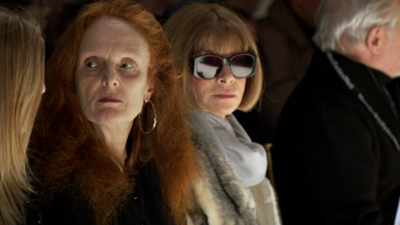

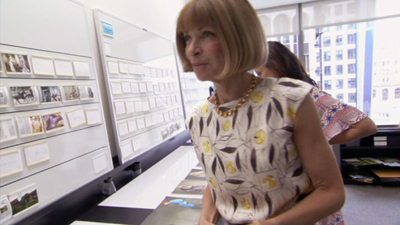

The September Issue
R.J. Cutler
2008, 90 min.
DVD, $9
Read more about the film at Wikipedia
Rent from Netflix
Available from Amazon
Harlan County, USA
Filmed in 1975, this award-winning documentary still has bite. It’s won much applause for its support of poor hard-scrabble miners in a Kentucky coal community, and their struggles to unionize a job that no human should do. The start of the film gives you an idea of the dirty hell fired up by this kind of low-tech coal mining. But equally important, this film is a deep immersion into the tangled small town Appalachian life of 1975 — a community and lifestyle that no longer exists. It captures the bloody drama of the strike including the climatic standoff with “scabs” shooting machine guns. Sadly the local villains play out the stereotype of corrupt southern white racist bullies. You could not cast their roles more perfectly. Watching this documentary feels like you spent 2 years sitting on the front porch with these characters, which is what the filmmaker did.
— KK
Harlan County, USA
Barbara Kopple
1976, 103 min.
DVD, $24
Read more about the film at Wikipedia
Rent from Netflix
Available from Amazon
Encounters at the End of the World
What a brilliant film-poem! I like how the marketing puts it: “There is a hidden society at the end of the world. One thousand men and women live together under unbelievably close quarters in Antarctica, risking their lives and sanity in search of cutting-edge science.”
Superficially this is a film about strange other-worldly creatures and ice formations beneath the the South Pole, and about the eccentric people who live in harsh and unappetizing conditions to study them. But musically scored with a soundtrack of eerie religious chanting, this film feels more like a prayer. It has the same mix of science discovery and spiritual awe you might expect if you were accompanying astronauts on a visit to another planet of life. Which they are. You can feel souls being expanded, and that soul expansion is what is captured here, at the bottom of the world, where unattached philosophers seem to collect as they float over unknown species on this planet. Tempering this exaltation are scenes of the brutal industrialization of a pristine place, annotated by a haunting, depressive narration. The film’s title indicates not just the bottom of the world, but also its end in time. It delivers soaring, stunning visions of life made possible by, or in spite of, dirty, mechanical probes into its heart. Somehow this duality of uplift and pessimism works for me. Others may find it too esoteric. I take it as a visual hymn to science.
In fact if there was such a thing as a religion of science, this film would be a good recruitment trailer for it.
— KK
Encounters at the End of the World
Werner Herzog
2007, 101 min.
$4, Amazon Instant Video rental
Read more about the film at Wikipedia
Rent from Netflix
Available from Amazon
Up the Yangtze
Everything in China is leaning towards the extremes, including the biggest fastest transformation into modernity. Nowhere is the relentless push toward the extreme felt more than in the mind-boggling, humongous scale of the Three Gorges Dam on the Yangtze. To make China’s gigantic and impersonal change fathomable and personal, this documentary follows two young adults living in poverty along the Yangtze, and shadows them as they sign up to work on a tourist river boat delivering foreign visitors to the dam. Their story is a remarkable and surprisingly intimate portrait of two ordinary citizens doing what hundreds of millions of their Chinese cohorts are doing — getting a job. Neither protagonist in this film is even particularly likeable or heroic, which makes their lives all the more real. Their faults and failures are universal. You get a very clear picture of how wrenching, how abrupt, how enticing these vast changes are. You have only to multiply this exceptional intimacy into two people’s struggles by a billion to see the country.
So far, this tiny window is the best picture of big change in China that I’ve seen.
— KK
Up the Yangtze
Yung Chang
2007, 93 min.
$2, Amazon Instant Video rental
Read more about the film at Wikipedia
Rent from Netflix
Available from Amazon
Little People, Big World
A mixed family of dwarfs and tall folks stars in this reality program. The father and mother are both dwarfs, their daughter and one young son are not. They also have teenage twins; one is a dwarf and one is not. Two layers keep this multi-year show captivating. One is the how-do-they-manage curiosity about being a little person in a big world. How do they drive, work, date? The other attraction is the drama of the usual parent-child, husband-wife, and sibling relationships, but all raised up a notch by the stress of dwarfism. Emergency surgery, near-death accidents, and even arrests by cops keep it lively. The father is an ambitious, creative, hard-driving, bigger-than-life little guy, and his family struggles to keep up, or get out of his way. In the third season the father was cited, but acquitted after trial, for a DUI charge. Even his own father (normal height) can find his dwarf son’s bossiness exacerbating. At one point grandfather tells the crew, “I’ve had it up to here with these dwarfs.” It’s that kind of candid honesty that is both entertaining and educationally compelling. Their dwarfism is neither romanticized nor overtly exploited, but is portrayed realistically. The series also benefits from its uncommon longitudinal stretch of 3 years, so you can watch characters mature and evolve. Because this unusual family is fundamentally likable, yet keeps overcoming obstacles both self-made and circumstantial, it’s a joy to watch them march forward.
— KK
Little People, Big World
(Season 1)
The Learning Channel
2006, 440 minutes
DVD (3-disc), $20
Read more about the film at Wikipedia
Rent from Netflix
Available from Amazon
Dirty Jobs
This reality series is far more educational than I expected. Sure, host Mike Rowe shovels a lot of shit and dispenses very funny jokes (potty humor anyone?) but these documentaries are about more than dirt. They are about admiration for the skill and hard work of the folks doing unwanted jobs. Rowe takes great pains to show how and why these essential hidden jobs are done. You feel his respect. He makes you appreciate their challenges. You get inside views, see things you ordinarily would not, learn how the world works. You get the thrill of being backstage. Kids love the shows, and I strongly encourage them to watch them all.
— KK
Dirty Jobs: Collection 1
Mike Rowe
2005, 493 min.
$7, DVD, 2 discs
Read more about the film at Wikipedia
Rent from Netflix
Available from Amazon
The Great Happiness Space
Unblinking access to a strange underworld in Japan. It’s a story about professional pretty boys who are paid a lot of money to be platonic friends to pretty young girls, who are paid a lot of money for sexual favors by Tokyo salarymen. The boys are bored pretending to be friends to the girls who are bored having to pay for friendship. This circle of broken hearts, each unhappy soul trying to buy happiness or “healing,” is mesmerizing, and in the end heart-wrenching. Because their roles allows no one in the “great happiness space” to develop real relationships, they pay high dollars for fake friends and “healing.” Yet all of the “healers” need to be healed. As one reviewer on Netflix said, “I wanted to give them all a hug or send them to summer camp or something.” But the honesty and candid peek into this private world is totally captivating. An invisible subculture illuminated.
— KK
The Great Happiness Space
Directed by Jake Clennell
2006, 75 min.
DVD, $35
Read more about the film at Wikipedia
Rent from Netflix
Available from Amazon









